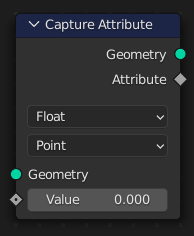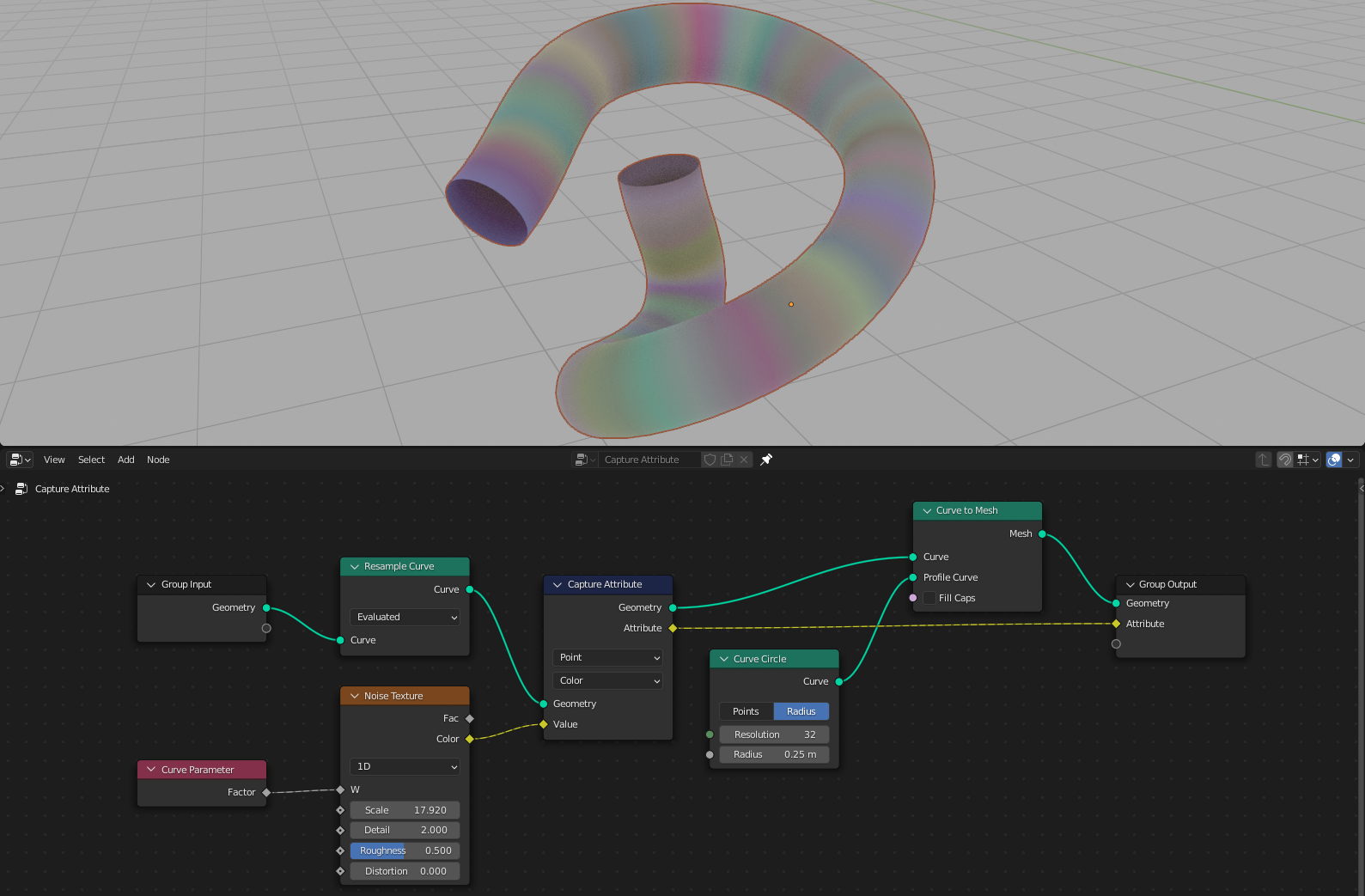捕捉属性

捕获属性 节点存储几何体上的一个字段的结果,并以节点插口的形式输出数据,这样它就可以被其他节点使用。
结果就像一个有名字的普通属性一样被存储在几何体上,但不是用名字来引用它,而是每当插口连接到一个节点的输入时,它就被检索出来。以后在评估节点树时,如果不再使用该属性,它将被自动删除。
This node is essential because field input nodes like the 半径节点
work in the context of the node they are connected to. Meaning that in order to pass data like radius
to a geometry that doesn't have radius, an explicit node link with the output of this node must be used.
Note
因为这个节点在几何体中存储了一个 匿名属性 ,在节点树中使用几何体的输出进行进一步的操作是非常必要的。除了输出的几何体,这个匿名属性不会存在于任何其他几何体。
输入
- 几何数据
标准的几何图形输入。
- 数值
要评估的输入字段。
属性
输出
- 几何数据
标准的几何体输出。
- 属性
被评估的领域的结果,存储在几何体上。
示例

Here, a noise texture is evaluated in along the path of the curve in one dimension and rendered with a shader. The capture node is required because the output of the 曲线到网格 does not have a "curve parameter", since it is a mesh and not a curve. So, the 样条线参数 must be evaluated while the geometry is still a curve.
在内部,噪声纹理在曲线上被评估后,会自动复制到曲线到网格节点的网格结果中。这意味着这个节点的 属性 输出可以沿着同一几何节点流连接的任何地方,内部属性都可以使用。